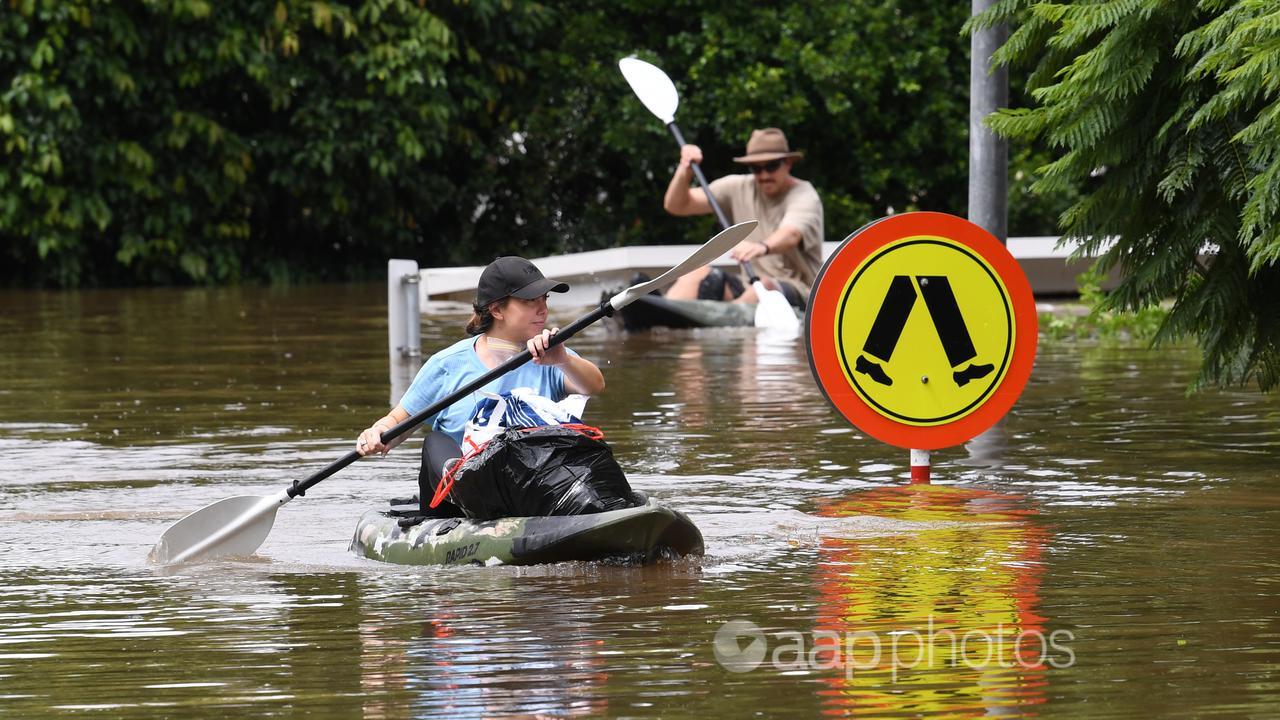A Facebook post has claimed the Queensland government’s use of cloud seeding – where clouds are injected with chemicals to encourage rainfall – caused the severe flooding in late February and early March.
The April 2 post (screenshot here) by an Australian Facebook user says the floods are an indication the “government is manipulating the weather”.
“This is purely man made and is an attack on these areas by the people in power who are supposed to be keeping us safe,” it states.
It references an “article” from March 3, 2022, titled Queensland Cloud Seeding Project Underway as proof of the claim. The article has been shared repeatedly on Facebook in recent weeks, as seen here, here, here, here, here and here.
The article displays the date, March 3, 2022, prominently then features a “cut and paste” copy from a Queensland government press release issued more than 14 years ago.
It quotes the-then Queensland minister for sustainability, climate change and innovation, Andrew McNamara, who hasn’t been an MP since losing his seat in 2009.
The original release on January 24, 2008, announced a cloud seeding research pilot program, investing $7.6 million in an effort to enhance the amount of water falling from rain-bearing clouds.
Cloud seeding experiments are nothing new; they’ve been occurring since 1947 in Australia and have been used in more than 50 countries.
To boost the chance of precipitation, cloud seeding uses planes, drones or land-based pumps to sprinkle small ice-like particles of silver iodide into existing clouds. Supercooled water vapour forms around these particles and as they grow bigger, they fall as rain.
And while it’s a technique that can be applied to everything from hail suppression to limit crop damage and to ice and fog management to make airport runways safer, its effectiveness is limited.
A spokesman for Queensland Agricultural Industry Development Minister Mark Furner confirmed to AAP FactCheck the “article” in the Facebook posts was a copy of a 2008 state government press release.
He said in an email the program was conducted in southeast Queensland during 2008-09 as a response to extreme water shortages.
Designed to explore the potential for cloud seeding to enhance rainfall, the pilot revealed “great variability” in cloud systems in the region, and further analysis of that variability was deemed necessary before conclusions about cloud seeding efficacy could be drawn
The spokesman added the government was not funding any active cloud seeding programs and none had been undertaken since the pilot program.
Weather experts have previously told AAP FactCheck the floods of February and March were in no way linked to cloud seeding.
Steven Siems, a professor at the School of Earth Atmosphere and Environment at Monash University, said there’s no chance cloud seeding can cause a massive weather event like the flooding across southeast Queensland and northern NSW, stating: “It had nothing to do with cloud seeding.”
The same fact check on March 10 also quoted Michael Manton, an emeritus professor at Monash University, saying there’s “no way” cloud seeding could produce the flooding.
“Those storms are acting on much larger scales than any cloud seeding activity,” he said.
The Bureau of Meteorology said the recent floods were triggered by a La Nina weather system dominating Australia’s east coast.
The Verdict
The claim that an article was evidence the flooding in southeast Queensland and northern NSW was the result of a government cloud seeding program is false. The article, which was dated March 2022, was actually a reproduction of a 2008 press release, announcing a Queensland government cloud seeding trial.
Experts have previously told AAP FactCheck cloud seeding could not produce the level of rainfall witnessed in the recent floods.
False – The claim is inaccurate.
AAP FactCheck is an accredited member of the International Fact-Checking Network. To keep up with our latest fact checks, follow us on Facebook, Twitter and Instagram.
All information, text and images included on the AAP Websites is for personal use only and may not be re-written, copied, re-sold or re-distributed, framed, linked, shared onto social media or otherwise used whether for compensation of any kind or not, unless you have the prior written permission of AAP. For more information, please refer to our standard terms and conditions.


















